Things you should know about Amsterdam
You’ve probably heard many stories about Amsterdam, and almost all of them are probably true. But still, there are helpful things to know that aren’t obvious, and this information will really help you plan a better trip. So here are things you should know about Amsterdam, with plenty of links with even more information.
Bikes are everywhere, but renting one yourself may not be a great idea
 One of Amsterdam’s many novelties is that bicycles dominate the roads and the urban Dutch lifestyle in the same way that cars dominate Los Angeles. There’s an enormous 6-level parking structure just outside the main train station, only for bikes. Another interesting thing that you’ll immediately notice is that about 99% of these bikes are what they call “omafiets” (granny bikes) because they all look like they were made at the same terrible factory about 60 years ago.
One of Amsterdam’s many novelties is that bicycles dominate the roads and the urban Dutch lifestyle in the same way that cars dominate Los Angeles. There’s an enormous 6-level parking structure just outside the main train station, only for bikes. Another interesting thing that you’ll immediately notice is that about 99% of these bikes are what they call “omafiets” (granny bikes) because they all look like they were made at the same terrible factory about 60 years ago.
The Amsterdam bike culture is just a bit complicated, and renting a bike in the city can be done easily and somewhat cheaply, but it’s really not as cool as you’d expect. For one thing, the endless bike lanes are almost always packed with Dutch folks traveling around at a commuting speed, so your group cruising around at vacation speed will just clog things up and even anger the locals. Another somewhat surprising thing is finding a good place to lock up your bike when you reach your destination is often way more difficult than you ever imagined. Rent a bike for one day, and ride out to a windmill or suburb, but don’t rent one for your whole stay to get around.
>>more information on Amsterdam bike rentals
The city is almost free of cars
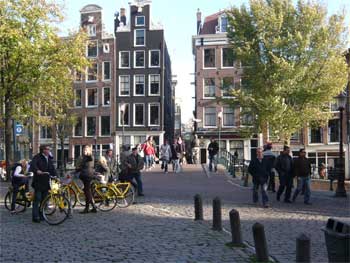 When you first arrive at Amsterdam’s Centraal Station, you’ll see the taxi stands and then a busy and car-filled intersection just past that, so this point is easy to miss on your own. But once you get out of that one small area, as long as you don’t follow the one busy street (called Damrak), you’ll barely see any cars driving around the city. The Amsterdam public transportation system is fantastic, consisting mostly of trams, but also of some buses and even a metro network. Then add in all the bikes mentioned above, and there is almost no use for a car.
When you first arrive at Amsterdam’s Centraal Station, you’ll see the taxi stands and then a busy and car-filled intersection just past that, so this point is easy to miss on your own. But once you get out of that one small area, as long as you don’t follow the one busy street (called Damrak), you’ll barely see any cars driving around the city. The Amsterdam public transportation system is fantastic, consisting mostly of trams, but also of some buses and even a metro network. Then add in all the bikes mentioned above, and there is almost no use for a car.
Yes, this is partly also because parking in Amsterdam is expensive and hard to find, and the result is that very few people drive at all. This creates a sense of calmness that is only similar to Venice, Italy. The calmness is usually interrupted by a local whose bike bell is desperately trying to remind you that you are standing in a busy bike path, but you catch on to how that works quickly enough. The trams are also nearly silent, and their loud digital bell sound effects are also quick to point out that you are about to get run over unless you move aside. Still, big chunks of the city are pedestrian only, or just pedestrians and bikes, so it feels like a sustainable green urban paradise in many ways if you look around.
The city center is virtually free of office buildings
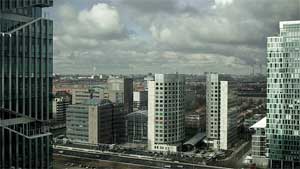
So the end result is that companies like Heineken, ING Group, Philips, and ABN-Amro, are all located in these business parks that are planned surrounding train stations just outside the city. That 6-story bicycle parking structure? It’s packed with bikes of people who live in the city and take the train one stop out to their office job. This is another unusual aspect of this city that makes visiting more pleasant, and actually a bit cheaper as well.
The no-smoking law of 2008 has made the coffee shop situation even weirder
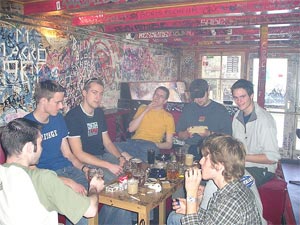 You are probably aware that Amsterdam has about 150 “coffee shops” where anyone over 18 can walk in an legally buy weed or hash, and then smoke it right there. Well, in July, 2008, the city joined the ‘no-smoking club,’ and that has made for a very unusual situation in these coffeeshops (the Dutch prefer to combine nouns). It’s still true that most Europeans prefer to smoke their cannabis along with some tobacco, but now that is illegal except in glassed-in sections of certain shops.
You are probably aware that Amsterdam has about 150 “coffee shops” where anyone over 18 can walk in an legally buy weed or hash, and then smoke it right there. Well, in July, 2008, the city joined the ‘no-smoking club,’ and that has made for a very unusual situation in these coffeeshops (the Dutch prefer to combine nouns). It’s still true that most Europeans prefer to smoke their cannabis along with some tobacco, but now that is illegal except in glassed-in sections of certain shops.
So think about it. A cop could walk into a coffeeshop full of stoners, and the one guy who mixed some tobacco in with his stash is the one breaking the law. Actually, it’s the shops and not the patrons who stand to get in trouble, but they do take this seriously. Most of the larger coffeeshops have installed a glass wall that separates most of the shop from where the employees hang out in front, so it’s not difficult to find a place to smoke anything you fancy. But still, it’s quite a novelty that weed is perfectly legal while tobacco isn’t.
>>more information on coffee shops in Amsterdam
Prostitution is legal, and you should probably walk through the Red Light District at least once anyway
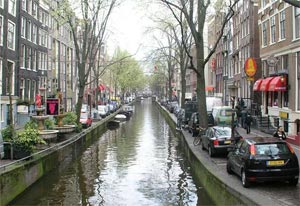 Just like in many other parts of Europe, prostitution is legal in the Netherlands, and it’s also a famous tourist attraction in the Red Light District in Amsterdam. It’s perfectly understandable that you might hesitate to walk through this neighborhood, and starting around 8pm each night that’s probably not a bad idea, but during the day this is an area not to be missed. It’s arguably the most beautiful part of a gorgeous city, and also the oldest and most historic neighborhood as well.
Just like in many other parts of Europe, prostitution is legal in the Netherlands, and it’s also a famous tourist attraction in the Red Light District in Amsterdam. It’s perfectly understandable that you might hesitate to walk through this neighborhood, and starting around 8pm each night that’s probably not a bad idea, but during the day this is an area not to be missed. It’s arguably the most beautiful part of a gorgeous city, and also the oldest and most historic neighborhood as well.
Most of the Red Light District looks pretty normal, although there are quite a few sex-toy shops mixed in so it’s not all that normal. But then you also have several streets where red-lit prostitutes flirt with passersby, hoping to do a little business. Two of the big canals have some prostitutes, but most of them can be found down long and narrow alleyways. During the day, many of these windows are empty, and you’ll mostly be seeing tour groups, locals going about their business, and abundant police keeping an eye on the bike thieves. Even if you still don’t like the idea of walking through the area yourself, you’ll be fine on the free walking tour described below, which also provides many interesting stories in the process.
The locals all drink beer in small glasses
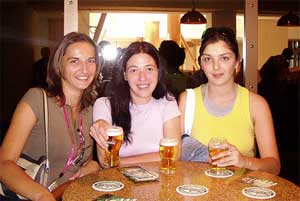 This isn’t really a big deal at all for anyone, but still worth pointing out. The locals drink plenty of beer, and it’s usually Heineken, and it’s always served in 250ml (half pint) glasses. The Dutch tend not to gulp down their beer like most of the rest of us, and they reckon that ordering two small beers will mean the beer stays colder and doesn’t go flat as quickly. Another interesting thing is that these half-pint beers are almost always exactly half the price of pints, so this small-glass strategy doesn’t cost any more money, like it would in most places.
This isn’t really a big deal at all for anyone, but still worth pointing out. The locals drink plenty of beer, and it’s usually Heineken, and it’s always served in 250ml (half pint) glasses. The Dutch tend not to gulp down their beer like most of the rest of us, and they reckon that ordering two small beers will mean the beer stays colder and doesn’t go flat as quickly. Another interesting thing is that these half-pint beers are almost always exactly half the price of pints, so this small-glass strategy doesn’t cost any more money, like it would in most places.
With this knowledge in hand, you can now begin your quest for a truly “local” pub. Nearly all bars that cater to tourist with any regularity offer full-pint glasses for us, alongside the half-pints for the locals, but many bars that don’t get lots of tourists don’t have large glasses at all. If, for some reason, it’s important to you to try to blend in with the locals, then the size of your beer glass is the biggest giveaway. But who cares? Just order the big ones anyway.
You can speak in English without hesitation
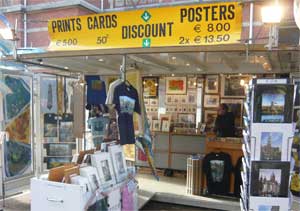 If you visit Germany, or any European country to the south or east of it, it’s considered polite to begin any conversation by asking if the other person speaks English, one way or another. “Sprechen sie English?” “Habla usted Inglés?” or whatever. But in Amsterdam (and most of the Netherlands and also Scandinavia), you needn’t bother with that. As the years roll on, this is even becoming true in places like Berlin and Athens, but starting out in English has been just fine in Amsterdam for decades.
If you visit Germany, or any European country to the south or east of it, it’s considered polite to begin any conversation by asking if the other person speaks English, one way or another. “Sprechen sie English?” “Habla usted Inglés?” or whatever. But in Amsterdam (and most of the Netherlands and also Scandinavia), you needn’t bother with that. As the years roll on, this is even becoming true in places like Berlin and Athens, but starting out in English has been just fine in Amsterdam for decades.
The truth is, that the Dutch are proud of the fact that they speak your language in addition to their own (and probably also German, and maybe French and Spanish). When speaking to each other, the Dutch will still speak Dutch, but to customers in a bar, coffeeshop, hotel, nightclub, or even most retail shops, they’ll start in English unless they are sure you speak Dutch. Asking them if they speak English can actually be taken as a mild insult, as if you are implying that they may be uneducated. If you know the stress of spending time in a place where few people speak any English, you’ll realize this little arrangement makes visiting incredibly easy and pleasant. (The Dutch also know their language isn’t the most pleasant sounding to outsiders, so them speaking English is just fine for everyone.)
You’ve got to try the French fries with mayonnaise at least once
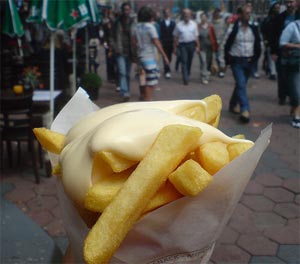 This really isn’t a great food city, and part of that equation involves that fact that the most common, and probably most famous, food in town is French fries with mayonnaise as the only topping. It’s true to the degree that it’s actually quite difficult to find a restaurant or fast food place that doesn’t serve Vlaamse frites (Flemish fries – the local name). Two of the places famous for serving the best fries in Amsterdam serve almost nothing else. You won’t get the local style at McDonald’s or Burger King, so make sure you try them somewhere else (but not FEBO).
This really isn’t a great food city, and part of that equation involves that fact that the most common, and probably most famous, food in town is French fries with mayonnaise as the only topping. It’s true to the degree that it’s actually quite difficult to find a restaurant or fast food place that doesn’t serve Vlaamse frites (Flemish fries – the local name). Two of the places famous for serving the best fries in Amsterdam serve almost nothing else. You won’t get the local style at McDonald’s or Burger King, so make sure you try them somewhere else (but not FEBO).
They don’t really taste all that amazing, even at the best places, but they are still worth a go. They use a two-step cooking process here, where frozen potato slivers are cooked for a time in oil at a low heat, in order to get the inside just right. And then just after you order them they’ll dunk them in very hot oil for a short time in order to get the outside to the right level of crispiness. All places offer a rich mayo as a topping, and most places also have ketchup, curry sauce, chili sauce, or a few other interesting things as alternatives. Try the mayonnaise at least once.
>>more information on Amsterdam French fries
Your splurge dinner should be Indonesian rijsttafel
 Yes, it’s still true that this isn’t an amazing restaurant city, but there is one excellent and unusual dish that you should try if you can. It’s served at all the Indonesian restaurants around the city, and it’s called rijsttafel, which is Dutch for “rice table.” It’s not cheap (starting at €15 or more per person), but it’s a lot of food and fantastically presented. You get a big bowl of rice, along with anywhere between 8 and 20 other small dishes that contain interesting Indonesian-inspired combinations of meat, vegetables, and spices.
Yes, it’s still true that this isn’t an amazing restaurant city, but there is one excellent and unusual dish that you should try if you can. It’s served at all the Indonesian restaurants around the city, and it’s called rijsttafel, which is Dutch for “rice table.” It’s not cheap (starting at €15 or more per person), but it’s a lot of food and fantastically presented. You get a big bowl of rice, along with anywhere between 8 and 20 other small dishes that contain interesting Indonesian-inspired combinations of meat, vegetables, and spices.
All the dishes come at once, and everything waits for you on a metal rack that is heated by a small flame or device, usually filling the entire tabletop. The combinations of food items and sauces over rice can be heavenly if you are in the right frame of mind, and it’s the one meal you’ll be talking about for years afterward. A few Indonesian places sell a small version of this dish for light eaters, but it’s really best to plan this in advance as your best culinary splurge.
>>more information on Amsterdam rice table
There are some excellent sites, including a castle and the world’s largest flower market, just outside the city
 Amsterdam has a city center that you can walk across in about 40 minutes if you put your mind to it, but still it’s packed with museums, galleries, shopping districts, bars, coffeeshops, and so many other attractions that you could stay here for a week and not begin to get bored. But you should still be aware that if you have more than 2 days or so, you have several options for Amsterdam day trips to consider, including two great ones that are easy to reach with a short ride on a local bus.
Amsterdam has a city center that you can walk across in about 40 minutes if you put your mind to it, but still it’s packed with museums, galleries, shopping districts, bars, coffeeshops, and so many other attractions that you could stay here for a week and not begin to get bored. But you should still be aware that if you have more than 2 days or so, you have several options for Amsterdam day trips to consider, including two great ones that are easy to reach with a short ride on a local bus.
The Muiderslot Castle is relatively small, but it’s very photogenic and it’s authentically presented, so if you haven’t properly experienced a real European castle then this is a good choice. You can get there in a bit over an hour from the train station, on a local bus that will drop you off right there. There’s a similar situation for the Alsmeer Flower Auction, which is held early every morning in one of the largest buildings in the world, just in the Amsterdam suburbs. It’s fascinating to see in person, and well worth waking up early one morning if you plan ahead.
>>more information on Amsterdam day trips
The free walking tour is excellent
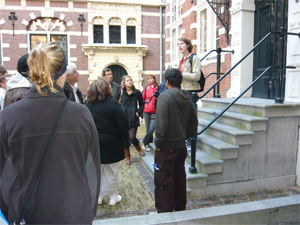 A few years ago, a company in Berlin started offering “free” city walking tours, and they’ve quickly spread to a dozen cities (and counting) all over Europe and in Israel. The Amsterdam one is excellent, just like the others, and it’s a highly recommended way to spend 3 hours on your first full day in town. The tours really are free, but the guide points out at the beginning that they work for tips, and they appreciate you paying them whatever you think it’s worth.
A few years ago, a company in Berlin started offering “free” city walking tours, and they’ve quickly spread to a dozen cities (and counting) all over Europe and in Israel. The Amsterdam one is excellent, just like the others, and it’s a highly recommended way to spend 3 hours on your first full day in town. The tours really are free, but the guide points out at the beginning that they work for tips, and they appreciate you paying them whatever you think it’s worth.
The groups are usually large enough that even if you tip €5 per person, it still means everybody wins. The tour starts twice a day in Dam Square, and leads you through the Red Light District (you’ll feel even less weird visiting in a big walking tour group), and then through other historic neighborhoods on your way out to the Jordaan near the Anne Frank House. Seriously, this is a well thought out tour and the guides know they have to be engaging to make any money, so it’s a great bargain even with a generous tip.
>>more information on the free Amsterdam walking tour
You should do a one-hour canal tour on your first day
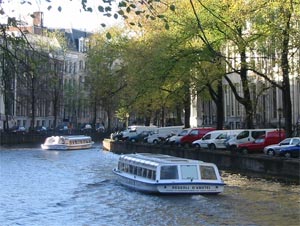 Amsterdam’s historic center is filled with stunning canals, and they have played a huge part in the birth and expansion of the city. It may sound a bit corny, but a basic one-hour canal tour is a great introduction to this place when you first arrive. There are about 6 or 7 companies that all follow the same route and provide similar (usually recorded) commentary, and even though they could be better, they are still worth it.
Amsterdam’s historic center is filled with stunning canals, and they have played a huge part in the birth and expansion of the city. It may sound a bit corny, but a basic one-hour canal tour is a great introduction to this place when you first arrive. There are about 6 or 7 companies that all follow the same route and provide similar (usually recorded) commentary, and even though they could be better, they are still worth it.
The basic one-hour tour is partly used as a come-on to sign people up for an expensive candlelight dinner cruise, but skip the theme cruises and just do the short one. Strangely enough, though the tours are basically identical, most companies charge around €12 while some charge around €7. Find one of the cheap ones and enjoy the bargain tour as a way of seeing many of the major sights and learning interesting stories about the city on your first day, if possible.
>>more information on canal tours of Amsterdam
For a canal tour and free admission to several Amsterdam museums, pick up an Amsterdam Pass.
Photo credits: Small glasses by Studenna on Flickr